Brain Training Activities for Visual Attention and Visual Processing
Brain training activities are good for everyone because they build neuron connections. Who couldn’t use a few extra neuron connections, right?
A previous article shares the what, why, and how of brain training. You can read it to understand the concept of brain training and learn how it improves cognitive skills for ALL learners. This article goes a step further to focus on two specific cognitive skills: VISUAL ATTENTION and VISUAL PROCESSING.
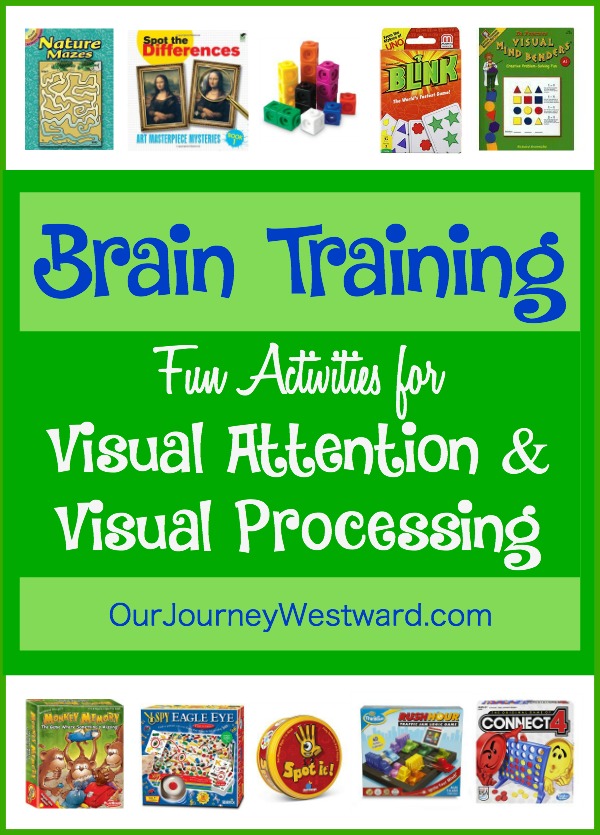
This post contains affiliate links.
What are visual attention and visual processing?
The word attention refers to the ability to stay focused on a particular thing. Sometimes, we need sustained attention to stay focused for a period of time. Sometimes, we need divided attention to focus on more than one thing at a time. Other times, we need flexible attention to switch focus from one thing to another smoothly. There are even times when all of these skills are necessary at once.
The word processing refers to the ability to take in and understand information. It also includes the speed at which someone can take in and understand information.
So, visual attention is the ability to take in important visual information while filtering out the rest. It’s also the ability to sustain or focus on visual information for periods of time AND shift focus when necessary.
Visual processing is the ability to take in and understand the information seen, preferably, processing the visual information at an acceptable speed.
Note: These are NOT the same thing as visual tracking. (Although many of the activities suggested below will support visual tracking.)
[Visual Attention] [Learning Rx] [Springer]
Visual Attention and Visual Processing Problems
If your child has trouble seeing things…like she needs glasses…this is NOT the same as visual attention or visual processing. Some clues you may need to work on visual attention and/or visual processing include:
- not recognizing differences in shapes, letters, or numbers
- consistently writing shapes, letters, or numbers incorrectly (after the age of 7)
- consistently reading letters, numbers, or words incorrectly (after the age of 7)
- having trouble repeating a pattern – even while looking at it
- having a hard time remembering what was just seen
- difficulty with copywork
- difficulty with reading and/or spelling
- having trouble staying in the lines when writing or doing mazes
- difficulty identifying an object when only parts of it can be seen
- difficulty locating a specific image when the image is surrounded by other images
- even bumping into things frequently when walking
“We Have Major Problems”
If you notice several of these issues, it may be best to contact an occupational therapist. However, using some of the brain training activities listed below to start building visual cognitive skills won’t hurt.
“We Have None of These Issues”
Awesome, but guess what? Any practice of attention or processing skills builds neuron connections. That means smarties can get even smarter! Think about it this way. A child preparing to take the ACT or SAT could strengthen the ability to take in visual information clearly and remember more with increased speed,making a difference in the final test score.
[NY Times]
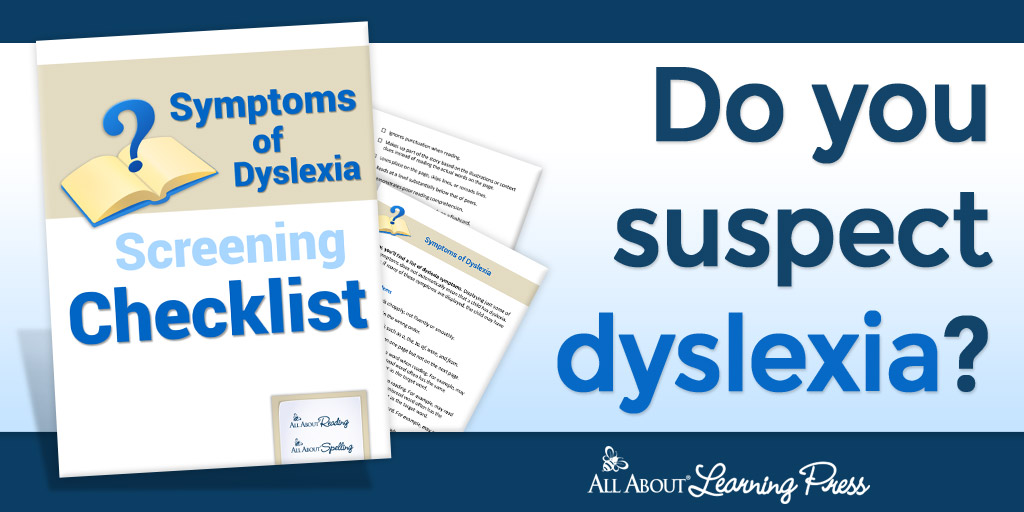
Help for Visual Cognitive Skills
In our homeschool, we do some brain training every day. The boys don’t mind because all our activities are game-like – so it’s like starting the day off with fun.
In about 15 minutes, we complete two or three activities. Games are rotated to work on all the cognitive skills, so visual attention and visual processing activities occur a few times a week. (The great thing about brain training games is that many work on more than one cognitive skill!)
Below are several activities that work well to support visual attention and visual processing. They are all geared toward elementary students through adults.
Simple Brain Training Exercises
These activities won’t cost a penny and require only a little prep work.
What’s Missing?
Place 10-20 items on a tray and cover the tray with a towel. Take the towel off and give your child 10-20 seconds to look at the items on the tray. After the time limit, cover the tray again. Complete one or the other of the following activities:
1. Ask your child to name as many of the items as possible.
2. Secretly remove one or more items from the tray. Take the towel off the tray and ask your child to determine which items are missing.
Picture Study
Ask your child to look closely for 30 seconds at all the details of a piece of art. (If you don’t already have art cards in your home, pull up a famous work of art on the computer.) After the time limit, take the art away and ask one or more of the following questions:
1. What colors did you see? Shapes? Lines?
2. What was the action?
3. Who were the characters? What were they doing?
4. Did you notice a time of day or season?
5. What was the artist trying to portray through the picture?
6. Make up a story about the picture.

Tic-Tac-Toe
Believe it or not, a good old-fashioned game of tic-tac-toe is great for practicing visual cognitive skills. Make it even better by playing it with the grid only – no written x’s or o’s. In other words, you and your child only point to the grid to “add” x or o. This method adds another layer of visual attention to the game.
Whiteboard Copywork
You draw something on a whiteboard, then your child draws the same thing – paying attention to every detail. You can draw pictures, letters, words, sentences, math facts, squiggles – anything – and ask your child to do the same. The goal is to gradually add more detail so that your child visually processes more each time.
b d p q Tracking Sheets
These b d p q discrimination worksheets aren’t fancy, but they work as a quick and easy brain training activity. The directions are included on the worksheets.
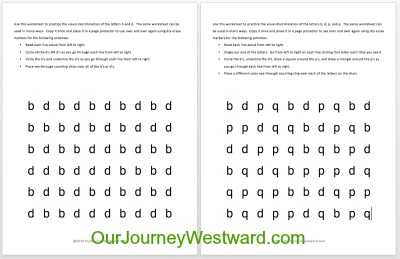
Balloon Games
Indoor balloon games may not seem like brain training activities, but using large motor skills alongside the visual requirements of the games offers additional sensory input that makes a difference.
Try these indoor balloon games: dodgeball, ping pong, catch, or batting. (Feel free to use beanbags instead of balloons for some of the games. Of course, you can play outdoor sports with real balls, too.)
Card Games for Brain Training
Card games are easy to find, fast to play, and GREAT fun!
Monkey Memory – This game is similar to the “What’s Missing?” activity mentioned already. For a slightly more difficult version, you may prefer Pictureka instead. (Playing the games on the Pictureka instruction sheet will be fine, but you can also lay out 6-12 cards in a row and ask your child to “make connections” from one card to the next. After 30 seconds, secretly remove one or more cards and ask your child to determine what’s missing.)
Blink – This game really stretches all the visual cognitive skills as cards are matched based on characteristics. It’s fast-paced and takes only a minute or two to complete.
SET – Great for visual cognitive skills and logical thinking, this game requires folks to race to gather sets of three cards based on visual characteristics.
I Spy Eagle Eye – Very similar to Where’s Waldo books, this game expects players to find specific objects before anyone else.
Spot It! – This fun, fast-paced game requires speed in visual processing as players try to be the first to match pictures on their cards to pictures on the card in the middle.
BrainBox – Uniquely, BrainBox trivia games require quick visual processing skills for all sorts of subjects. Find one that compliments your current studies to double as a review of concepts.
Quick Pix Animals and Quik Pix Geography – Not only do these games train visual skills, but science and geography, too. The goal is to be the first to find a “partner card” from your pile that goes with the card in the middle.
Scrabble Slam – This fast-paced game requires at least two players. The goal is to be the first person to run out of letter cards as you slap them on a word in the middle to change its spelling. Besides working on visual processing speed, spelling is reinforced, too.
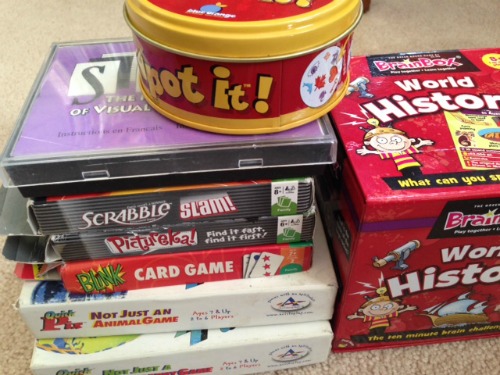
Hands-On Games for Brain Training
These hands-on games typically take a little longer than card games, but most can be played within 10 minutes. Most of them go a long way in promoting both visual cognitive skills and logical thinking.
Puzzles – All puzzles promote visual cognitive skills. Choose a level that challenges, but doesn’t frustrate your child. The particular puzzle I’ve linked here is an XXL puzzle. Children who respond well to movement activities do well with XXL puzzles. Additionally, they require some midline crossing, which can be another important piece to building cognitive skills.
Speedy Match – After shaking a container of colored balls that fall into a pattern, you replicate the pattern with additional pieces. Alone, children can leisurely replicate patterns to practice visual attention and processing. Add opposing players and you add the necessity to process with speed.
Tangoes – This solitary puzzle game uses a set of tangrams and picture cards that challenge you to build the pictures with tangram pieces.
Hoppers – This solitary game is similar to the peg game at Cracker Barrel because you must hop little frogs over one another to remove them from the pond. A set of cards requires you to set up the frogs on the pond differently each time – meaning your child isn’t likely to master the “formula” quickly.
Rush Hour – In this solitary game, cards prompt you to set up little cars in a certain traffic jam pattern. The player must move the cars to free up the traffic jam so a particular car can escape. There’s a free online version, too!
Color Code – In yet another solitary game, you are given pattern cards which you must recreate by stacking various colored pieces in a certain order. It’s harder than it sounds!
Blokus – While it can be played alone, this game is more fun with 2-4 players. Players are given a set of various-shaped playing pieces. The goal is to strategically place pieces on a grid to block other players from having room to place their pieces.
Qwirkle – Think of this game as Scrabble with shapes. The pieces must be played according to their shape and color, and you must always build from existing pieces already in play. You must have at least two players, but three or more is better.
Q-Bitz – This game can be played in several ways, all promoting visual cognitive skills. It can be played alone or with up to four players. More players increase the need for visual speed as players race to recreate patterns using a set of colored cubes.
Pixy Cubes – This game is very similar to Q-Bitz. It’s slightly easier to play because the cubes only use solid colors.
Connect Four – Think of this game as a 3-D version of tic-tac-toe.
Simon – This solitary electronic game has colored buttons that light up (and make sounds) in various patterns. Once the pattern is finished, you must remember which buttons to press to complete the same pattern. It’s very challenging!
Guess Who? – Two players take turns asking questions about the items on the board to determine which item their opponent has chosen. While no speed is involved, visual attention is required to single out the correct item and win the game.
Mastermind – This may well be one of my all-time personal favorite games It requires serious thought, strong visual attention skills, and lots of logical thinking to find the correct pattern of colored pieces that your opponent has hidden. Save this game until at least 3rd grade.
Pattern Block Cards – Pattern blocks are a great tool for living math lessons. If you add a set of picture/puzzle cards, you have another activity for building visual cognitive skills. Artistic children will especially love building with pattern blocks.
Linking Cubes for Pattern Practice – Linking cubes are another tool recommended for living math that work well for visual brain training. As the parent, you can build patterns with the cubes and then ask your child to replicate them with their cubes. You can also ask your child to create patterns or replicate premade patterns using different colors than the originals. Patterns can also be created based on criteria – like ABBC (ie. red, blue, blue, yellow.)
Attribute blocks – Attribute blocks are a third manipulative recommended for living math that also requires visual skills. You’ll appreciate these ideas which will teach you how to use the blocks.
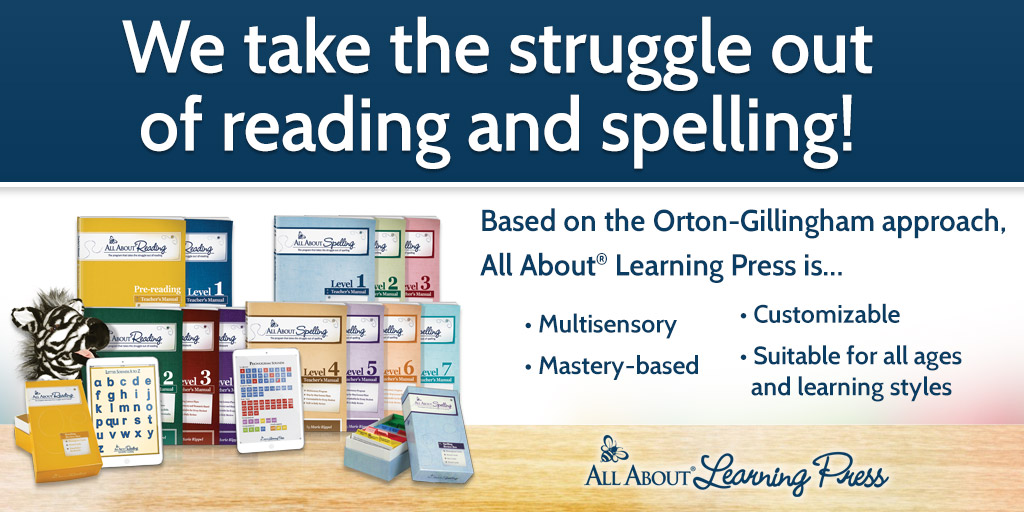
Online Games for Brain Training
Eye Can Learn has a series of fun online games that specifically work on visual discrimination skills.
Workbooks for Training Visual Attention
Visual Mind Benders – There are several levels of the Visual Mind Benders series from Critical Thinking Press. Besides building visual cognition skills, they have a nice logical thinking component, too!
Dyslexia Games – This series of books was written specifically for children who struggle with dyslexia. In my review, you can see the books I’ve singled out to use for any child needing visual cognitive skills practice.
Dover Activity Books – There are tons of inexpensive game books from Dover Publishing that work on visual skills without your child ever knowing brain training is on the agenda. Here are several examples of books you might have around the house:
Where’s Waldo? – Where’s Waldo? books are good for practicing visual attention.

Mercy. That was a lot of information! I hope you can use several of these ideas to help improve visual attention and visual processing in your home!
I Teach Brain Training Workshops!
Join me for a Brain Training Homeschool Masterclass to understand each of the cognitive skills and learn some specific activities that can help address them during this 1 1/2 hour workshop.
One of my favorite workshops to present is my brain training workshop because it’s very hands-on and sends you home with so many practical ideas. If you can gather a group of parents together within a reasonable distance from Lexington, KY (or provide transportation and lodging for longer distances), we can have a lot of fun together! I can put together brain training workshops that last anywhere from one hour to six hours. Are you interested? Let’s talk!
Disclaimer: I am not an occupational therapist or licensed in brain training. While I do have a master’s degree in education, I do not have any extensive training in special needs. I only present this information based on my personal experiences in our homeschool where I have seen improvements in my children with consistent time spent doing brain training activities.















![Blokus Game [Amazon Exclusive]](https://m.media-amazon.com/images/I/61DDxDMWQhL.jpg)
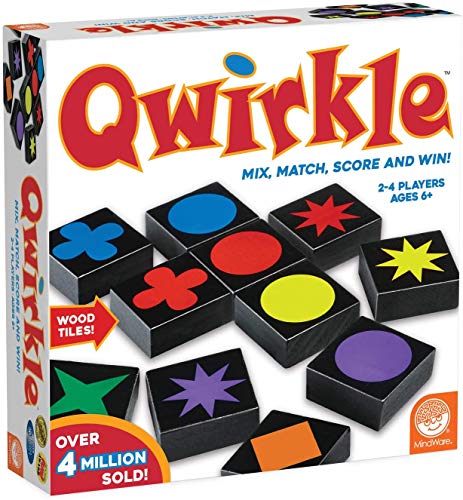











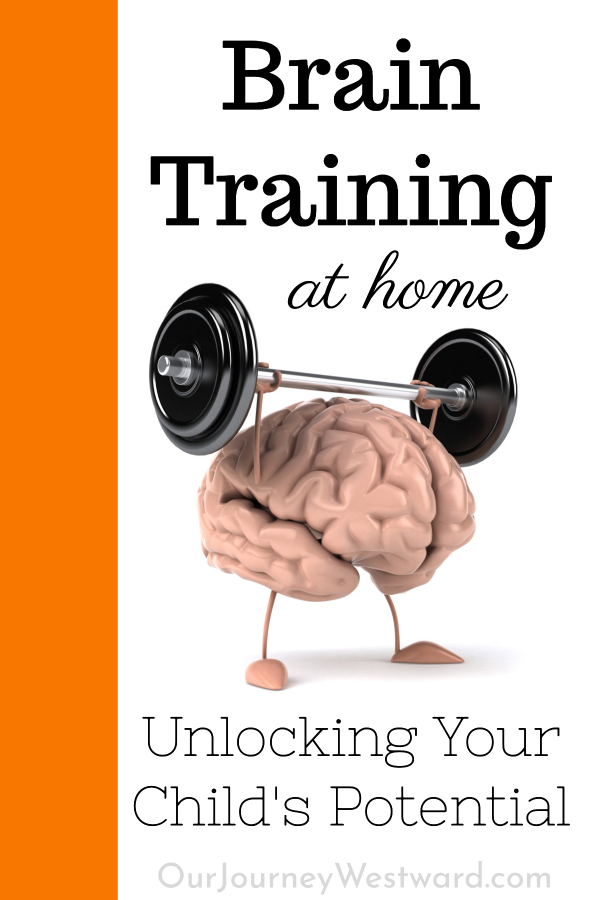
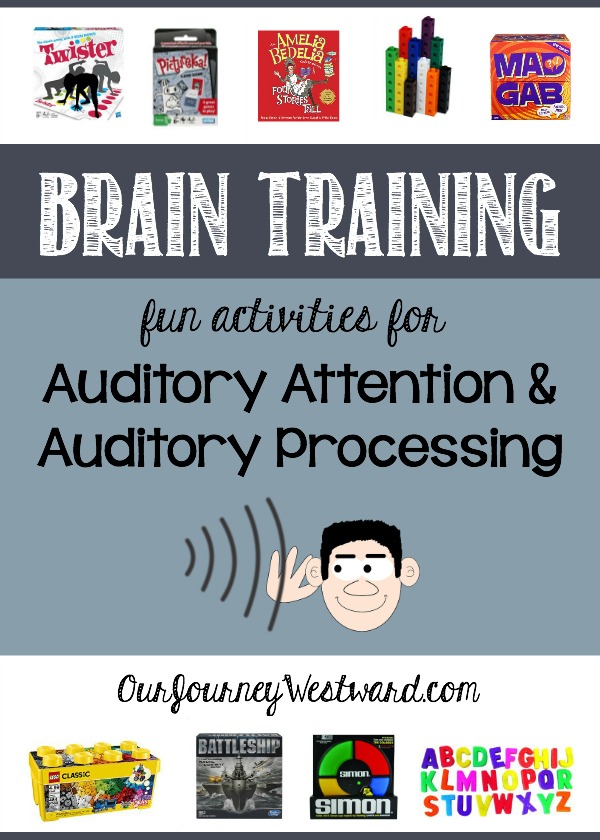
Using this post, I’m going to assemble a “Brain Training Box.” I already have several of the items you listed and have selected a couple more to round out the selection. Thanks for a great post!
Yes, Rhonda! I have a brain training box, too! It’s nice to have several options gathered in one place. I’ll often switch out the items in the box so we don’t get in a rut. (Although, practicing the same activity many times over can equate to much improvement in a particular cognitive skill.) 🙂
Thank you . . . these are wonderful ideas! My son (age 10) has a vision impairment called convergence insufficiency. He has been through vision therapy, but I needed some ideas for ongoing work at home. I can’t wait to implement your ideas!
I’ve never heard of convergence insufficiency, Alyssa. I sure hope you find these activities helpful for him!
Thanks for your great brain training articles! We recently bought Set and Blink because of your recommendation. We LOVE them!!!!
I’m so glad to hear that, Miriam!
My daughter just began therapy for convergence insufficiency this week. Coincidentally, we played Q-Bitz for the first time today. She said it was more challenging for her eyes, but more fun than what was prescribed. She begged me to ask her doctor to substitute her boring daily activities with games like these. Thanks for the suggestions of even more fun alternatives (which we’ll, of course, check with her doctor!)
Oh, I’m so glad to hear your daughter is loving Q-bitz for eye practice! Yes, always talk to the doctor before replacing therapy activities, but I bet you’ll find he/she is glad to allow a few games as alternatives.
Do you usually do the Brain training Exercises before beginning school, or do you space it out during the day?
We do ours at the beginning of our school day. If you’re using them as “brain breaks” from the rest of school, spacing the activities out would be fine. If you’re using them to work on some issues, 20-40 minutes of exercises is better to train the brain to focus, stay attentive, avoid distractions, etc.
Thank you so much for this! I’m a mother to a son with special needs and have been trying to find something as straightforward as this. You’ve saved me loads of time, which is priceless. Thanks again!
I’m so glad you’ve found something helpful here, Dez!